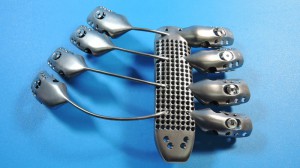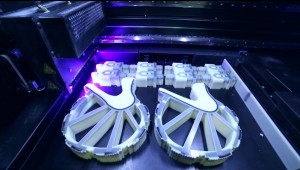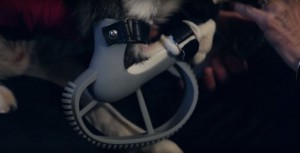We had a great talk about the future of digital the other week, you might have already seen the blog post. Today Alice is going to talk about what she found the most alluring – the future of 3D printing…
While I’m fairly sure I came up with the idea of 3D printers as a way to eat burgers at your desk back when I was 15, clearly, in the last few years, some more productive and inventive people than me have been coming up with far more impressive applications.
For me, the most impressive application is in healthcare – surgeons are able to print out missing bone parts! Recently a Spanish cancer patient had his ribcage rebuilt after the removal of a tumour.
Based on the patient’s high-resolution CT scan data, the team first created a 3D reconstruction of his chest wall and tumour so that the surgeons could plan with precision. Next, they used the 3D digital CAD file detailing the patient’s anatomy to build the customised implant, layer by layer, on a $1.3 million electron beam metal printer. It’s pretty incredible to be able to take scans of body parts that aren’t even there and recreate them via a printer.
And if you’re a dog lover: our friends at Canon/3D Systems printed prosthetics to help a disabled dog to walk again.
Then our eyes were opened to even more fascinating applications, making 3D printing look like your gran’s typewriter, with new 4D printing. Scientists at MIT have been developing materials which respond according to programmed parameters, to light, water, heat, air pressure, etc. Imagine buying flat packed furniture that assembles itself with a drop of water?
As far as I can tell, the materials work in a similar way to a fortune telling fish when you lay it across your palm, but on a much bigger scale. The team, led by computational architect Skylar Tibbits, starts with a carbon fibre roll that follows the typical warp and weft pattern. A secondary material, formulated in the lab to respond to changes in temperature, is spot-printed on the mesh. As the carbon fibre is exposed to, say, heat, the temperature-sensitive material changes shape and causes the sheet to deform in ways specified by the designer.
If you’ve always hated putting together Ikea furniture then check out Tibbits’ work here: http://www.selfassemblylab.net/
It’s nothing short of incredible, and it creates a huge number of possibilities. It’s suddenly much easier to build temporary housing for refugees or people displaced by natural disasters, and colonising other planets is a more realistic possibility if you don’t have to carry all of the structures pre-built with you. 3D and 4D printing is going to change the world, and maybe others too!




